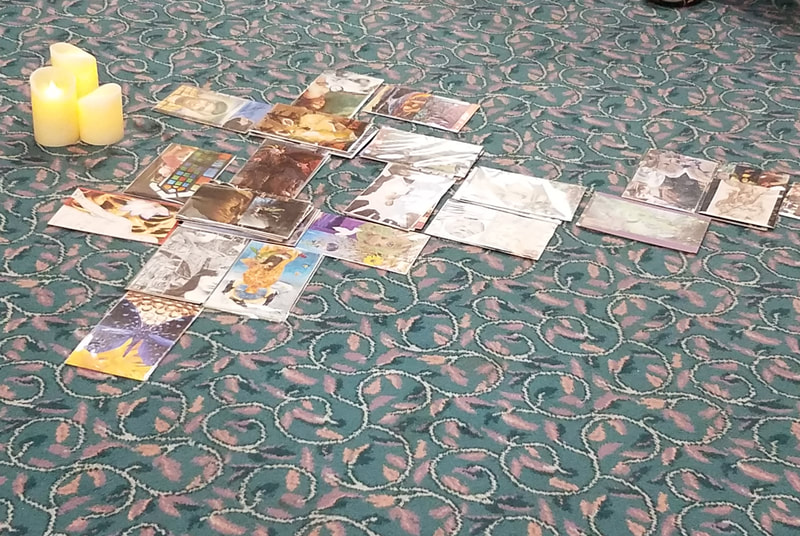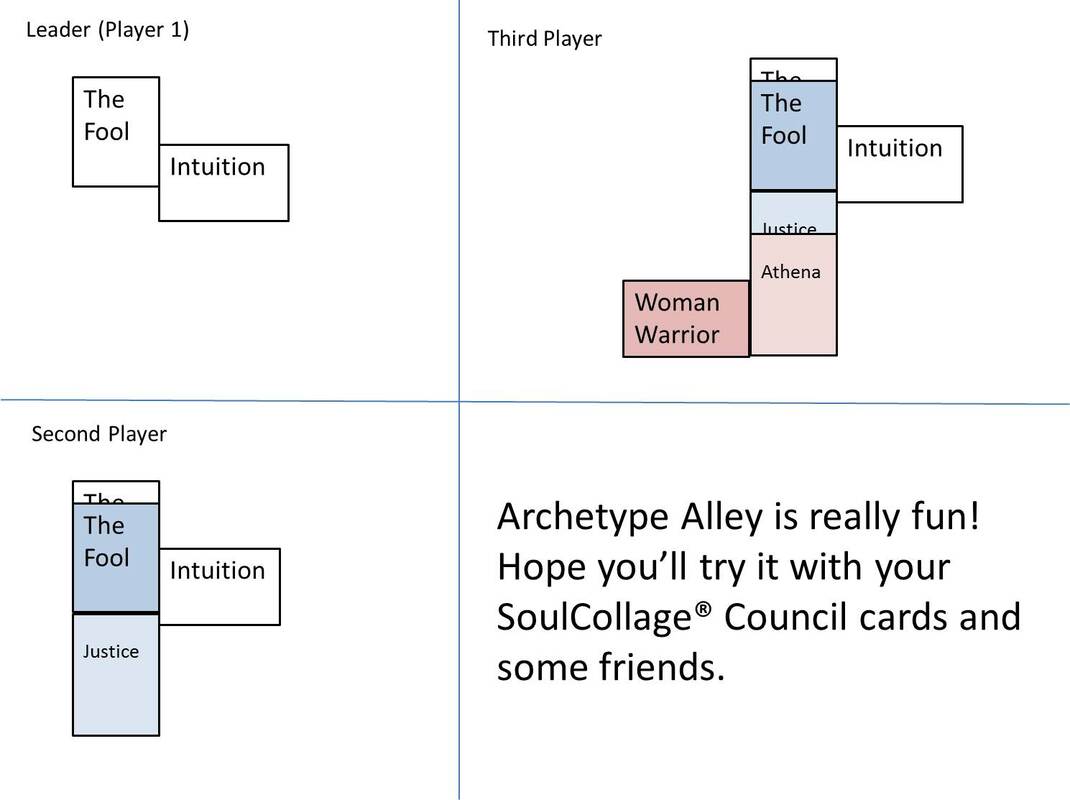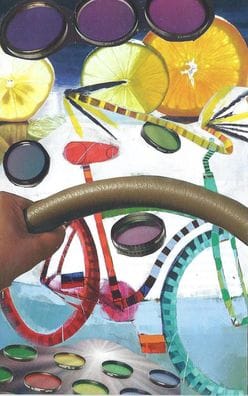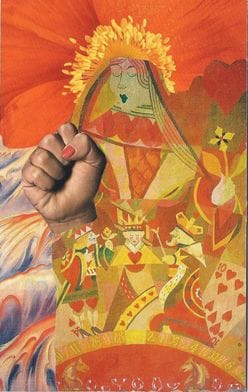Wherever you go, there you are! Archetype Alley is a way to combine storytelling, card play and SoulCollage® - and it's a perfect way for a group to get to know each other. All you need is your Council Cards, some memories, and a willingness to share them.
I created this game for our Windy City Card Games retreat in 2018, and we just played it at "The Best of SoulCollage® Card Games" weekend intensive last weekend. People have been asking me for instructions for many months - so, here they are!
The core principle of this game is to recall and tell the story of how two archetypes were at play during an experience or event of your lifetime. It can be from any time period of your life, even going back to childhood. It may be humorous, ironic, or even tragic. The game is diagrammed in the figure below.
The leader starts the process with two Council cards and an associated story. In this example, Intuition and The Fool were placed on the playground (the floor or a table) and a brief story was told about how The Fool came forth to make it clear just how "correct" it was to risk letting Intuition lead the decision about an important staff hire.
From this point, there is no order to the players. People rise or say "I've got a story" whenever they wish. It's helpful to let people who've not yet played before someone plays an additional time.
The second player brings two archetypes: he'll present one Council card to "match" one of the existing two cards and "up" with a Council card representing a third archetype that's not yet on the board. He will tell his story, interweaving his two archetypes - in this example, The Fool and Justice. He places his Fool card atop the existing Fool card, and Justice beside it.
The third player now has three choices to match, and must also add another. In this example, they first ask whether they may play "Athena" to match Justice (it's the leader's discretion, and she allows it). The player places Athena atop Justice adds Woman Warrior nearby - then she tells her story.
Now there are 4 archetypes to match. The next player matches one of those, adds a new one, and tells their story. Then there are five archetypes to play on......
This process continues, with the Leader arbitrating any questions about "matches." The more archetypes to play off, the more people retrieve stories and find they have related Council cards.
Optional: You may use 5 x 8 inch index cards as placeholders for cards people haven't made yet. They can write the name of an archetype they've not yet made a card for and use the placeholder as if an actual card.
Another possibility: You could play this game using only index cards upon which people would write the names of archetypes. Although it would not be as interesting visually, or personally, it could be played without the context of SoulCollage®.
I created this game for our Windy City Card Games retreat in 2018, and we just played it at "The Best of SoulCollage® Card Games" weekend intensive last weekend. People have been asking me for instructions for many months - so, here they are!
The core principle of this game is to recall and tell the story of how two archetypes were at play during an experience or event of your lifetime. It can be from any time period of your life, even going back to childhood. It may be humorous, ironic, or even tragic. The game is diagrammed in the figure below.
The leader starts the process with two Council cards and an associated story. In this example, Intuition and The Fool were placed on the playground (the floor or a table) and a brief story was told about how The Fool came forth to make it clear just how "correct" it was to risk letting Intuition lead the decision about an important staff hire.
From this point, there is no order to the players. People rise or say "I've got a story" whenever they wish. It's helpful to let people who've not yet played before someone plays an additional time.
The second player brings two archetypes: he'll present one Council card to "match" one of the existing two cards and "up" with a Council card representing a third archetype that's not yet on the board. He will tell his story, interweaving his two archetypes - in this example, The Fool and Justice. He places his Fool card atop the existing Fool card, and Justice beside it.
The third player now has three choices to match, and must also add another. In this example, they first ask whether they may play "Athena" to match Justice (it's the leader's discretion, and she allows it). The player places Athena atop Justice adds Woman Warrior nearby - then she tells her story.
Now there are 4 archetypes to match. The next player matches one of those, adds a new one, and tells their story. Then there are five archetypes to play on......
This process continues, with the Leader arbitrating any questions about "matches." The more archetypes to play off, the more people retrieve stories and find they have related Council cards.
Optional: You may use 5 x 8 inch index cards as placeholders for cards people haven't made yet. They can write the name of an archetype they've not yet made a card for and use the placeholder as if an actual card.
Another possibility: You could play this game using only index cards upon which people would write the names of archetypes. Although it would not be as interesting visually, or personally, it could be played without the context of SoulCollage®.
Want to deepen your understanding of the SoulCollage® Four Suits and learn more about how archetypes inform your story? Join me for "Suit Your Self" and online course happening March 15 - May 24. It's self-paced with opportunities to interact on a Facebook Group and on two teleconferences.














 RSS Feed
RSS Feed